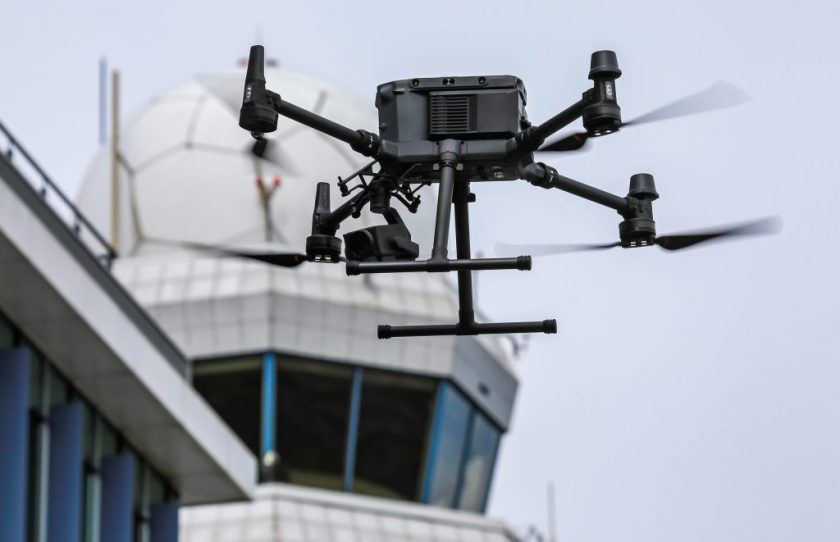Poland’s Supreme Audit Office (NIK) has issued a report following its audit of Polish airspace management, which includes an assessment of uncrewed aerial system (UAS) accidents and risk as well as a wider look at manned airspace and agency leadership.
Since 2017, the number of reports of aviation incidents in Poland involving UAS has been increasing from 12 in 2017 to 144 in 2022. Most concerned illegal flights or violations of airspace, e.g. flights near airports or other temporarily reserved or prohibited zones. According to Polish air navigation agency (PAŻP) data, the most serious recent incident took place on 13 May 2023, when UAS came close (within approx. 30 m) to a LOT Polish Airlines plane approaching to land at Okęcie Airport.
In its report, NIK stated concerns regarding the use of the DroneRadar mobile application, which was designed for easy reporting of flights to drone operators, as well as checking whether they could be performed in a given location. “It was owned by a private entity that cooperated with PAŻP,” NIK notes, adding that “the agreement between the Agency and this entity assumed that the application would expire at the end of 2023. Earlier, in 2022, the Agency took action to become independent from the DroneRadar application (including announcing a tender for the purchase of a new application), but these actions did not bring any results.” According to NIK, the President of PAŻP did not introduce effective solutions to prevent the risk of the DroneRadar application being decommissioned from operational use, and the actions taken were late and therefore ineffective.
NIK says risk occurred on September 28, 2023, when the DroneRadar mobile application was deactivated from operational use. “This resulted in a lack of two-way, non-verbal communication between air traffic control services and pilots of UAS”. According to NIK, PAŻP allowed for the occurrence of risks and threats to air traffic safety in civil aviation. “Deactivation of the application caused a significant workload for air traffic controllers, difficulties in the drone operators’ environment, reluctance to report flights, as well as the risk of an increase in the so-called grey zone of drone flights,” the report continues. “And this in a situation where the Agency did not have an IT tool at that time that could take over the tasks and functions of this application.”
It is worth noting here that the Polish Air Navigation Services Agency (PANSA) has created the DroneTower app, which was launched in April 2024 as the official IT system for reporting the intention to fly a drone in Poland. The app registered half a million flights in its first six month of operation and an update was provided at the end of 2024 with additional features.
PANSA has responded to NIK’s findings.
“The NIK audit confirmed significant errors in PAŻP management, which occurred in 2022-2023, but also occurred since 2018,” PANSA said in its June 4 statement. “Since January 2024, the repair of strategic processes at PAŻP has been ongoing, and it is effective.”
In response to the findings regarding UAS traffic management, PANSA noted that currently, the agency reduces the risk associated with uncontrolled drone traffic by implementing statutory obligations and numerous operational and educational activities. “In 2024, PAŻP implemented and is constantly developing modern operational digital tools supporting safe flight operations, such as DroneTower, a mobile application enabling flight reporting and presenting current airspace restrictions in real time, and KSID (National Drone Information System), offering, among others, a platform for registering drone operators and an e-learning platform.”
Image: PANSA




